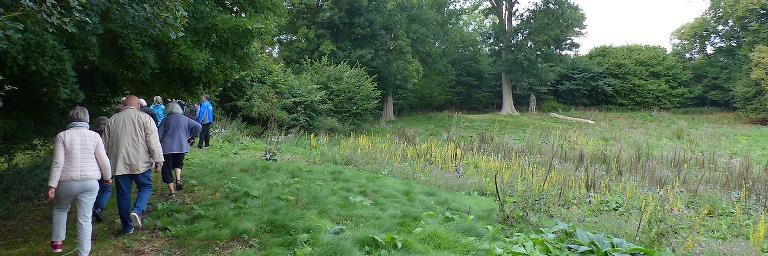Borgø
Borgø is an island of 17 hectares. It is the largest island in Søndersø, and it belongs to the Engestofte estate. If you turn right (west) at the jetty on Borgø and follow the path, you will come to the remains of the impressive Revshaleborg fortress.

The remains of a castle
Today, little remains of the castle. Only a circular castle square, with steep slopes down to the water on three sides. The fourth side has four ramparts with moats in between. No one knows what the settlement looked like on the castle. Only a few bricks remain.
Inland is the village of Revshale, where a churchyard and traces of settlement from the 12th century have been found. A brick kiln has also been found here, which was probably in use when the castle was being built. The castle was probably built around 1200, as the remains of a piled bridge to the island date from 1195-1200. This was a time of struggle for royal power, and it was rebellious petty squires who destroyed the castle in 1256.
Popular destination
Borgø has been a popular destination since the beginning of the 19th century. In the 1900s, a steamship and later motorboats carried visitors to the island. The excursion boats sailed to the island from Maribo, and guests could also be rowed across from Revshale. Now only a ruin of the pavilion remains, where guests could be entertained and schoolchildren on excursions could buy soft drinks. By 1966, time had run out for the outings. There were no more customers, and so the boating stopped. Silence descended over Borgø and the pavilion sank into the gravel. If you look closely, however, you can find the remains of former lindelyst houses, hazel fences and large trees of beech, lime, larch, bramble, navr and ash, which now grow wild, but which once formed the island's pleasure forest. Only since 1993 has it again been possible to visit the exciting island by turbo boat.
Nature forest
Nowadays almost the whole of Borgø is designated as natural forest (untouched forest). However, the castle bank itself must be kept free of vegetation. The island's old forest was dominated by elm, which has now almost disappeared due to elm disease. In the humid areas, alder and ash predominate.
